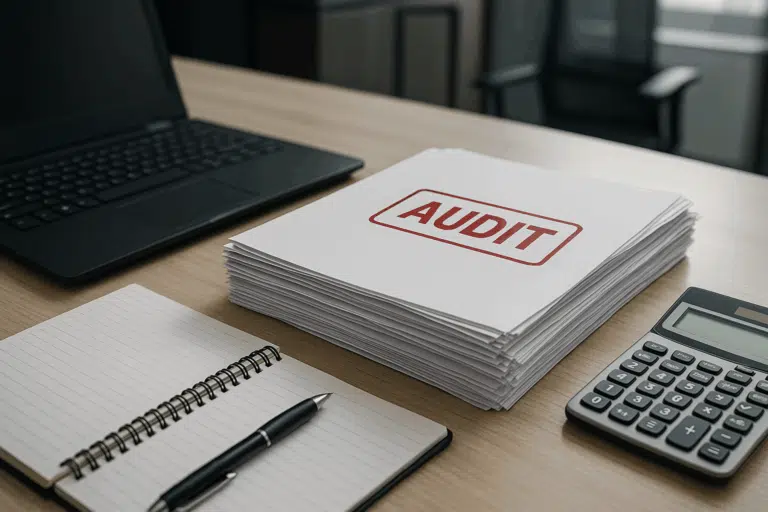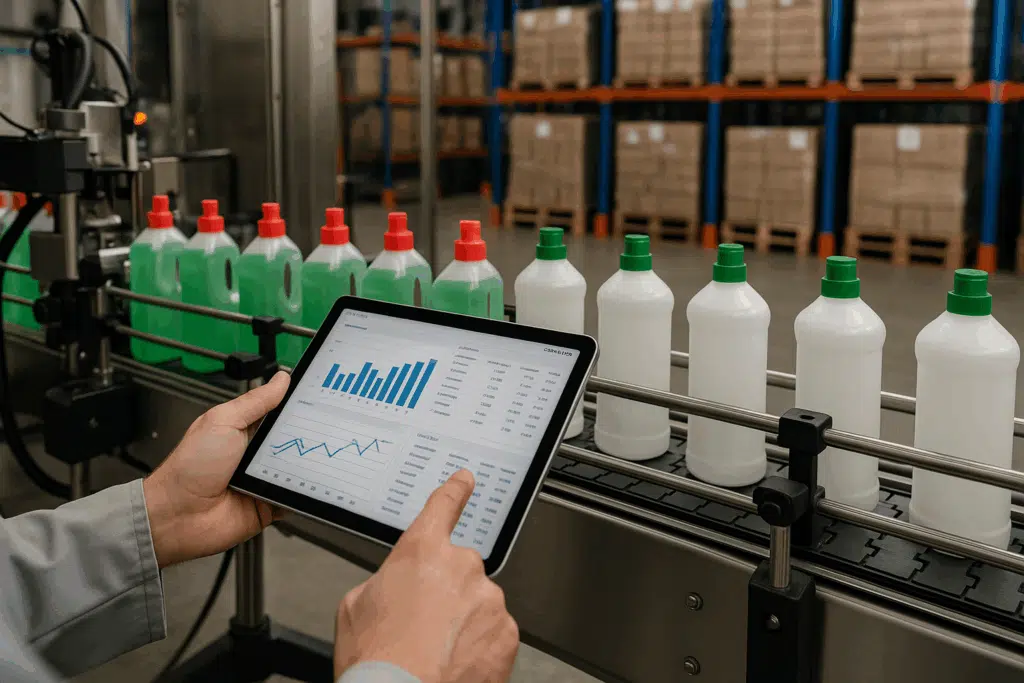The agricultural sector holds some of the most expensive and sensitive fixed assets across all industries. A single high-tech tractor can represent millions in investments. However, climate events, market fluctuations, or technological advances can quickly erode its value. This is where impairment plays a strategic role.
Impairment, a concept introduced by the International Financial Reporting Standards (IFRS), acts as a safeguard for asset valuation. Its purpose is to ensure that the book value of assets reflects their actual recoverable amount, preserving financial transparency, governance, and credibility in financial statements. In agribusiness — highly exposed to droughts, technological changes, and currency swings — the impairment test becomes essential to protect the balance sheet.
In this article, you will learn:
- What impairment is and why it is critical for agribusiness
- The difference between impairment and depreciation
- When to apply the impairment test
- The full step-by-step process to perform the impairment test properly
- A practical example applied to agricultural assets
- The financial and tax impacts of impairment
- The risks of ignoring impairment in asset management
- How CPCON Group provides technical expertise for accurate impairment assessments
Table of Contents
ToggleEnsure accurate valuation of your agricultural assets.
Speak with a CPCON Group specialist for expert guidance on applying impairment with full compliance.
Contact us
What is impairment and why is it critical for agribusiness?
Impairment, or recoverability test, is the periodic evaluation of assets to verify whether their book value can still be recovered through future use or sale. When the recoverable amount of an asset is lower than its book value, the difference must be recognized as an impairment loss in the financial statements.
In agribusiness, impairment becomes even more relevant due to:
- Extreme climate exposure: droughts, floods, pests, or hailstorms may reduce asset productivity.
- Accelerated technological obsolescence: new, more efficient machinery can quickly devalue older equipment.
- Governance and compliance pressure: listed agribusiness companies, or those seeking credit or foreign investment, must keep transparent, audited, and updated financial records.
Impairment is not just an accounting requirement; it is a management tool to prevent hidden asset risks and strengthen financial governance.

Impairment is not depreciation: understand the key difference
Both impairment and depreciation reduce the book value of assets, but for very different reasons.
- Depreciation is a planned, systematic allocation of an asset’s cost over its useful life. It occurs gradually, year after year.
- Impairment is an extraordinary adjustment, triggered by unexpected events that significantly reduce the asset’s ability to generate future benefits.
In agribusiness, equipment like harvesters, agricultural planes, or storage facilities naturally lose value over time through depreciation. But sudden events — such as climate disasters or disruptive new technology — may trigger impairment, requiring a one-time reduction in book value.
This distinction ensures that financial statements reflect the true economic situation of the business at every reporting date.
When should impairment be applied? Identifying impairment indicators in agriculture
Accounting standards require that impairment tests be conducted whenever there are clear indications that an asset may have lost value. In agriculture, these situations are frequent due to the sector’s high volatility and exposure to unpredictable events.
Here are the main indicators that trigger the need for an impairment assessment:
Extreme climate events
Droughts, floods, frosts, and pest outbreaks can drastically reduce the use or productivity of machinery, equipment, or entire production facilities.
Technological obsolescence
New models of machinery offering higher productivity and lower operating costs can devalue older equipment rapidly.
Physical damage to assets
Severe mechanical failures, accidents, or poor maintenance may cause irreversible damage, reducing the asset’s ability to operate effectively.
Market changes
A sharp drop in commodity prices, lower demand for certain crops, or regulatory shifts can compromise the economic viability of certain operations or assets.
Operational restructuring
Closing production units, selling farms, or shifting business strategy may leave certain assets idle or obsolete.
Even without clear external signals, IFRS requires annual impairment testing for intangible assets with indefinite useful lives or assets not yet available for use. In agriculture, it is common to perform impairment tests during year-end financial closures, but companies should act earlier if significant events occur during the year.
| Situation | Practical Example |
| Climate event | Severe drought reduces farm production |
| Technological change | New, more efficient tractor enters the market |
| Physical damage | Harvester suffers irreparable breakdown |
| Market price drop | Sharp decrease in commodity sales prices |
| Operational changes | Closure of a production unit |
How to perform the impairment test: step-by-step methods for agriculture
The impairment evaluation process in agribusiness follows the same IFRS guidelines as other industries but requires specific care when analyzing agricultural assets. The process happens in well-defined stages:
Identify the cash-generating unit (CGU)
In agriculture, the CGU can be:
- A farm
- A group of tractors
- A storage facility
- A specific agricultural project
The key is that the unit must generate cash inflows independently from other assets.
Choose the valuation method
IFRS allows two methods to calculate the recoverable amount:
Value in use
This method estimates the present value of future cash flows that the asset will generate through continued use. It requires:
- Detailed revenue projections
- Operating costs
- Selling prices
- Maintenance expenses
- Discount rates reflecting business risk

Fair value less costs of disposal
This method estimates the price the company would receive by selling the asset in an orderly transaction, minus estimated selling costs (freight, commissions, taxes, etc.). It is often easier to apply when there is an active secondary market for the asset.
Measurement and calculation
The company may calculate both methods and adopt the higher result as the recoverable amount.
- For equipment with an active resale market (tractors, harvesters, trucks), fair value less costs of disposal is often preferred.
- For assets with low liquidity (irrigation systems, buildings, long-term infrastructure), value in use may be more appropriate.
Accounting recognition
If the recoverable amount is lower than the asset’s book value, the difference must be recognized immediately as an impairment loss in the income statement. The adjustment should also be fully documented in the financial statement notes.
Future reversal (if applicable)
If the asset’s recoverable amount increases in the future, part of the impairment loss may be reversed — but only up to the original book value (adjusted for accumulated depreciation).
Why strict methodology matters
Following a consistent process ensures reliable impairment reports, especially for companies subject to audits, investors, and financial institutions.
Practical example of impairment applied to agricultural assets
Let’s make this clearer with a real-world example.
A farm purchases a high-tech tractor for $700,000, planning to use it over eight years. After three years of operation, several events significantly affect its value:
- A severe drought reduces production, lowering the need for intensive tractor use.
- The tractor suffers serious mechanical issues. Despite repairs, its performance no longer meets expectations.
- New, more advanced models enter the market, making the current model less attractive and lowering its market value.
Faced with these events, the accounting team decides to reassess whether the tractor’s book value can still be recovered.
Determining the recoverable amount
After a professional evaluation, two values are estimated:
- Fair value less costs of disposal: Based on market quotations, considering the tractor’s age, condition, and selling costs, it could be sold for $300,000.
- Value in use (discounted cash flow): Projecting future income and expenses, the present value of expected cash flows is calculated at $280,000.
Comparing values and recognizing the loss
IFRS requires using the higher of these two amounts. In this case:
- Recoverable amount: $300,000
- Current book value after depreciation (3 years of 8): $437,500
The difference becomes the impairment loss:
- Impairment loss: $437,500 – $300,000 = $137,500
This loss is immediately recorded as an expense in the income statement and reduces the asset’s book value in the balance sheet.
Why this process is strategic for agribusiness
- Prevents overstatement of asset values in financial statements
- Increases transparency for auditors, lenders, and investors
- Supports management decisions on whether to maintain, replace, or sell assets
- Reinforces financial governance in a sector exposed to unpredictable risks
| Description | Amount ($) |
| Acquisition cost | $700,000 |
| Accumulated depreciation (3 out of 8 years) | $262,500 |
| Current book value | $437,500 |
| Recoverable amount (net selling price) | $300,000 |
| Recorded impairment loss | $137,500 |
Don’t wait for your assets to lose value. Get expert guidance now and protect your agricultural investments before risks escalate.
CPCON Group specializes in impairment assessments that prevent costly surprises.
Talk to our team

The financial and tax impacts of impairment: what agribusiness needs to consider
Recognizing impairment affects not only the balance sheet but also financial indicators and tax planning. Understanding these impacts is essential to ensure compliance and avoid future risks.
Direct financial impacts
- Reduces the carrying value of fixed assets on the balance sheet
- Records the impairment loss immediately in the income statement
- Affects financial indicators such as ROA, EBITDA, and net equity
- Improves the quality and credibility of audited financial statements
- Demonstrates transparency and alignment with international accounting standards (IFRS)
Tax impacts
- The impairment loss, although recognized for accounting purposes, is not deductible for corporate income tax purposes under Brazilian tax rules (Real Profit regime)
- According to Law 11.941/2009, impairment adjustments do not reduce the taxable base for IRPJ or CSLL
- Companies must maintain auxiliary controls to reconcile tax and accounting bases
- It is important to fully disclose the impairment adjustments in the financial statement notes, explaining the assets affected, the methods used, and the justification for the loss
Special considerations for agribusiness
- Agricultural equipment often has variable useful lives, requiring periodic reviews of cash flow projections
- The resale market for agricultural equipment can be highly volatile, requiring updated and reliable price quotations
- Assets acquired with subsidized financing may include specific loan agreements that require extra attention when recording impairment
Proper impairment recognition strengthens financial governance, reduces audit risks, and increases the trust of banks, investors, and regulators in the company’s financial health.
The consequences of not performing impairment in the agricultural sector
Failing to apply impairment can expose the company to serious financial and governance risks.
Inaccurate balance sheets
Without impairment adjustments, assets may remain recorded at values higher than their actual recoverable amounts. This creates a misleading picture for investors, lenders, auditors, and regulatory bodies.
Wrong financial decisions
Overstated asset values can lead to poor decisions on credit, investments, or equipment replacement. Financial planning becomes disconnected from reality, increasing operational and financial risk.
Audit and regulatory issues
Auditors may challenge the absence of impairment tests, leading to audit remarks or even refusal to approve financial statements. Regulatory compliance may also be compromised.
Loss of transparency for investors and boards
Shareholders, boards, and potential investors expect reliable, updated financial information. Omitting impairment weakens management credibility and may affect the company’s market reputation.
Poor asset management decisions
Without accurate asset valuations, it becomes harder to decide whether to keep, sell, or replace equipment. Impairment provides essential data for operational decisions.
Apply impairment. Keep your asset values updated. Reduce risks and demonstrate responsibility in managing agricultural assets.

How CPCON Group ensures accuracy and security in impairment assessments
Impairment requires technical expertise, reliable data, and strict methodology. Not every company has the internal resources, time, or experience to handle this process with full confidence.
CPCON Group offers complete support to help companies apply impairment safely and correctly. Here’s how:
Specialized technical assessment
CPCON brings together a multidisciplinary team of accountants, engineers, and economists with hands-on experience in agricultural asset valuations. Each asset is analyzed based on real usage, condition, market dynamics, and technological factors.
Strict compliance with standards
Every assessment follows CPC 01 (Brazilian standard aligned with IFRS) and international accounting rules. The technical report clearly shows how the recoverable amount was calculated, fully documented and ready for audit.
Reliable, well-founded calculations
All projections are based on real production data, maintenance history, useful life estimates, and updated market values. No generic estimates. Each assessment reflects the asset’s actual condition.
Minimize audit risks
With solid, well-documented impairment reports, companies avoid disputes during audits, ensuring smoother approval from external auditors, investors, and regulatory authorities.
Full support throughout the process
CPCON Group assists in every stage: data collection, method selection, test execution, accounting documentation, and guidance on financial statement disclosures.
By performing impairment with expert support, companies avoid mistakes, reduce risks, and strengthen financial governance.
Expand your knowledge on asset management and impairment. Read these guides:
● Mastering Fixed Asset Depreciation for Financial Accuracy
● Mastering IFRS Asset Management: How Useful Lives and Residual Values Impact PPE and Intangibles
● Fixed Asset Audit: Checklist with 5 Practical Steps to Prepare Yourself
Toward solid financial governance in agribusiness
In agribusiness, physical assets represent significant investments and are highly exposed to unpredictable risks. Ignoring impairment leaves the company vulnerable to accounting errors, poor decisions, and loss of financial credibility.
The impairment test is not just a technical requirement. It is a strategic asset management tool that protects the company’s value, increases transparency, and strengthens decision-making confidence.
With the support of specialists like CPCON Group, companies can apply impairment accurately, comply with accounting standards, and present reliable financial reports to auditors, investors, and financial institutions.
Revisit your agricultural assets annually. Don’t wait for problems to arise. Impairment is preventive—it protects your company before financial losses occur.
Ready to strengthen the financial governance of your agribusiness?
CPCON Group offers precise, technical, and fully compliant impairment assessments.
Contact us now.
FAQ
What is impairment?
Impairment is an adjustment made when an asset loses part of its value and can no longer generate the expected economic return. The impairment test verifies whether the asset’s book value can still be recovered through continued use or sale.
What is the difference between depreciation and impairment?
Depreciation is a planned reduction of an asset’s value over its useful life. Impairment is an extraordinary adjustment triggered by unexpected events that cause a sudden drop in the asset’s recoverable value.
When should impairment be performed?
Whenever there are signs of value loss, such as physical damage, technological changes, climate events, or market declines. For intangible assets, impairment tests must be performed at least once a year, even without clear external indicators.
What is an impairment test?
It is a process to calculate how much the asset is still worth. The company can use either the value in use (discounted cash flow projections) or the fair value less costs of disposal (market selling price minus selling costs).
Does impairment apply to all agricultural assets?
Impairment applies to fixed assets such as machinery, vehicles, storage facilities, irrigation systems, and agricultural infrastructure. Each asset is analyzed based on its real condition, market, and future expected use.
Does impairment affect company taxes?
No. Impairment losses affect accounting records but are not deductible for corporate income tax (IRPJ and CSLL in Brazil). Companies must track these differences in their tax calculations.
How can CPCON Group help with impairment?
CPCON Group provides complete technical evaluations, applies the correct methodology, documents every step, and delivers fully auditable reports. This ensures compliance, transparency, and financial governance for agricultural businesses.


























